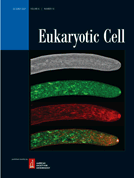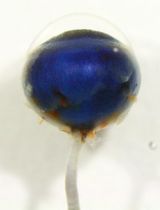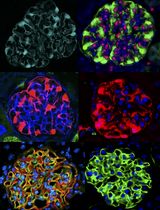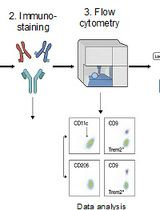- EN - English
- CN - 中文
Isolation and Culture of Human Adipose-derived Stem Cells from Subcutaneous and Visceral White Adipose Tissue Compartments
来源于皮下和内脏白脂肪组织腔室的人脂肪源性干细胞的分离和培养
发布: 2016年11月20日第6卷第22期 DOI: 10.21769/BioProtoc.2027 浏览次数: 15121
评审: Salma HasanAgnieszka PastulaAnonymous reviewer(s)
Abstract
Human Adipose-derived Stem/Stromal Cells (ASCs) have been widely used in stem cell and obesity research, as well as clinical applications including cell-based therapies, tissue engineering and reconstruction. Compared with mesenchymal stem cells (MSCs) derived from other tissues such as umbilical cord and bone marrow, isolation of ASCs from human white adipose tissue (WAT) has great advantages due to its rich tissue source and simple surgical procedure. In this detailed protocol we describe a protocol to isolate and characterize ASCs from human WAT. Molecular characterization of isolated ASCs was performed through surface marker expression profiling using flow cytometry. Adipogenic capacity of the isolated ASCs was confirmed through inducing adipogenic differentiation and Oil Red O staining of lipid. This protocol provides researchers with the tools to culture and assess purity and adipogenic differentiation capacity of human ASCs, which can then be utilized for required downstream in vitro applications.
This protocol has been modified from Baglioni et al. (2009), Baglioni et al. (2012), and van Harmelen et al. (2005) to describe in detail a complete technique to isolate and subsequently characterize human ASCs from human WAT biopsies. This protocol has been utilized to isolate and characterize human ASCs from both subcutaneous and visceral WAT. The isolated human ASCs show high purity and demonstrate adipogenic differentiation capacity in vitro.
Background
Human ASCs are an invaluable in vitro cell model to study molecular pathways important for the etiology of metabolic diseases, including obesity and type 2 diabetes. Human ASC cultures derived from different WAT sources, including subcutaneous and visceral compartments, can also help us to understand functional differences between different WAT compartments. Short protocols have been published previously to describe the isolation of human ASCs from a maximum of two different WAT compartments (Baglioni et al., 2009; 2012; van Harmelen et al., 2005). Here we describe a detailed protocol for both, isolation and characterization of human ASCs from human WAT biopsies collected from several WAT compartments. This protocol has been used to reliably derive human ASCs from four different WAT compartments, including superficial subcutaneous, deep subcutaneous, omental and mesenteric WAT. The isolated primary cultures display homogeneous morphology and are pure, with a high percentage of cells displaying typical MSC marker expression. The isolated human ASCs also have the ability to differentiate into mature adipocytes, with accumulation of intracellular triglyceride droplets. In summary, this protocol reliably results in the isolation of pure human primary ASCs that maintain robust adipogenic differentiation capacity in vitro.
Materials and Reagents
- 15 ml centrifugation tube (Corning, Falcon®, catalog number: 352099 )
- 50 ml centrifugation tube (Corning, Falcon®, catalog number: 352070 )
- 10 cm cell culture dish (Greiner Bio One, CellStar®, catalog number: 664160 )
- 0.2 μm 25 mm syringe filter (Pall, Acrodisc®, catalog number: 4612 )
- 30 ml syringe (BD, Luer-LokTM, catalog number: 302832 )
- 5 ml polystyrene fluorescence activated cell sorting (FACS) tubes (Corning, Falcon®, catalog number: 352054 )
- 100 μm nylon mesh cell strainer (Corning, Falcon®, catalog number: 352360 )
- 6-well-plates (Thermo Fisher Scientific, Thermo ScientificTM, catalog number: 140675 )
- Human WAT from patients
- OXOIDTM Phosphate buffered saline (PBS) tablets (Thermo Fisher Scientific, Thermo ScientificTM, catalog number: BR0014G )
- Dimethyl sulfoxide (DMSO) (Sigma-Aldrich, catalog number: D2650 )
- Fetal bovine serum (FBS), heat inactivated (Thermo Fisher Scientific, GibcoTM, catalog number: 16140071 )
- Bovine serum albumin (BSA) (Sigma-Aldrich, catalog number: A7906 )
- Antibodies (see Table 1)
- Isopropanol (EMD Millipore, catalog number: 109634 )
- Collagenase type IA (Sigma-Aldrich, catalog number: C9891-1G )
- Ammonium chloride (NH4Cl) (Sigma-Aldrich, catalog number: A0171 )
Note: This product has been discontinued. - Potassium bicarbonate (KHCO3) (Sigma-Aldrich, catalog number: P7682 )
Note: This product has been discontinued. - 0.25% trypsin-EDTA (Thermo Fisher Scientific, GibcoTM, catalog number: 25200056 )
- Dulbecco’s modified Eagle medium: nutrient mixture F-12 (DMEM/F-12) (1:1) (Thermo Fisher Scientific, GibcoTM, catalog number: 11330032 )
- Penicillin-streptomycin (P/S) (Thermo Fisher Scientific, GibcoTM, catalog number: 15140122 )
- Dexamethasone (Sigma-Aldrich, catalog number: D4902 )
- 10 mg/ml insulin solution from bovine pancreas (Sigma-Aldrich, catalog number: I0516 )
- 3-isobutyl-1-methylxanthine (IBMX) (Sigma-Aldrich, catalog number: I5879 )
- Indomethacin (Sigma-Aldrich, catalog number: 17378 )
- 100% ethanol (EMD Millipore, catalog number: 100983 )
Table 1. Antibody informationAntigen AntibodyManufacturerDilutionHost/IsotypeCD34 hematopoietic cells Anti-Human CD34 APC1:100Mouse IgG1, kappaCD31 Endothelial cells Anti-Human CD31 APC1:100Mouse IgG1, kappaCD14 (Macrophages) hematopoietic cells Anti-Human CD14 APC1:100Mouse IgG1, kappaCD11b (Leukocytes) Monocytes Anti-Human CD11b APC1:100Mouse IgG1, kappaCD45 (Nucleated cells of hematopoietic origin) lymphocytes Anti-Human CD45 APC1:100Mouse IgG1, kappaCD106 (Activated) endothelial cells Anti-Human CD106 PE1:100Mouse IgG1, kappaCD90 MSCs Anti-Human CD90 APC1:100Mouse IgG1, kappaCD44 MSCs Anti-Human CD44 APC1:100Rat IgG2b, kappaCD29 MSCs Anti-Human CD29 APC1:100Mouse IgG1, kappaCD73 MSCs Anti-Human CD73 APC1:100Mouse IgG1, kappaCD105 MSCs Anti-Human CD105 APC1:100Mouse IgG1 - Paraformaldehyde (Sigma-Aldrich, catalog number: P6148 )
- Oil Red O powder (Sigma-Aldrich, catalog number: O0625 )
- Sodium hydroxide (NaOH) (Sigma-Aldrich, catalog number: 221465 )
- Collagenase solution (1 mg/ml) (see Recipes)
- Red blood cell (RBC) lysis buffer (10x) (see Recipes)
- Proliferation medium (see Recipes)
- Differentiation medium (see Recipes)
- Induction medium (see Recipes)
- Insulin medium (see Recipes)
- 10 mM dexamethasone stock solution (see Recipes)
- 1 mM dexamethasone working solution (see Recipes)
- 0.5 M IBMX stock solution (1,000x) (see Recipes)
- 200 mM indomethacin stock solution (1,600x) (see Recipes)
- 4% paraformaldehyde (PFA) (pH = 7.4) (see Recipes)
- Oil Red O working solution (see Recipes)
Equipment
- Cryogenic vials (Thermo Fisher Scientific, Thermo ScientificTM, catalog number: 366656 )
- Laminar flow tissue culture hood
- Sterilized surgical tools including forceps and scalpel or scissors
- Mr. FrostyTM freezing container (Thermo Fisher Scientific, Thermo ScientificTM, catalog number: 5100-0001 )
- Locator 6 Plus Rack and Box Systems, liquid nitrogen Dewar (Thermo Fisher Scientific, Thermo ScientificTM, catalog number: CY50985-70 )
- BD FACSCanto II flow cytometer (BD, model: BD FACSCanto II ) or similar equipment
- Analytical balance (Sartorius, model: CPA124S )
- MaxQTM 37 °C orbital shaker (Thermo Fisher Scientific, Thermo ScientificTM, model: 4450 )
- Centrifuge with swinging bucket rotor (KUBOTA, model: 2800 )
- Automated cell counter (Thermo Fisher Scientific, Countess®, catalog number: AMQAF1000 )
Software
- FACSDiva software (BD)
Procedure
文章信息
版权信息
© 2016 The Authors; exclusive licensee Bio-protocol LLC.
如何引用
Ge, X., Leow, S. C., Sathiakumar, D., Stünkel, W., Shabbir, A., So, J. B. Y., Lomanto, D. and McFarlane, C. (2016). Isolation and Culture of Human Adipose-derived Stem Cells from Subcutaneous and Visceral White Adipose Tissue Compartments. Bio-protocol 6(22): e2027. DOI: 10.21769/BioProtoc.2027.
分类
干细胞 > 成体干细胞 > 基质细胞
细胞生物学 > 细胞分离和培养 > 细胞分离
您对这篇实验方法有问题吗?
在此处发布您的问题,我们将邀请本文作者来回答。同时,我们会将您的问题发布到Bio-protocol Exchange,以便寻求社区成员的帮助。
提问指南
+ 问题描述
写下详细的问题描述,包括所有有助于他人回答您问题的信息(例如实验过程、条件和相关图像等)。
Share
Bluesky
X
Copy link




















